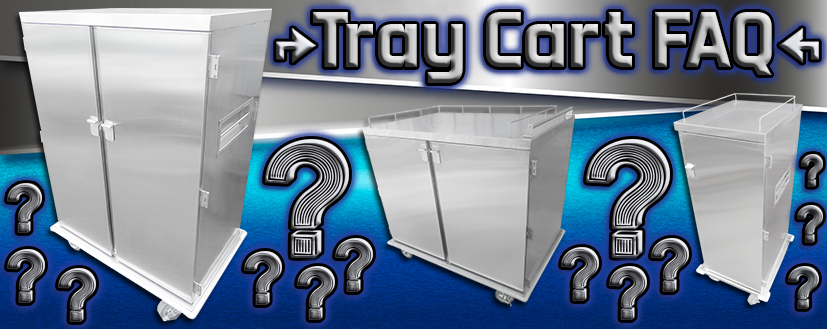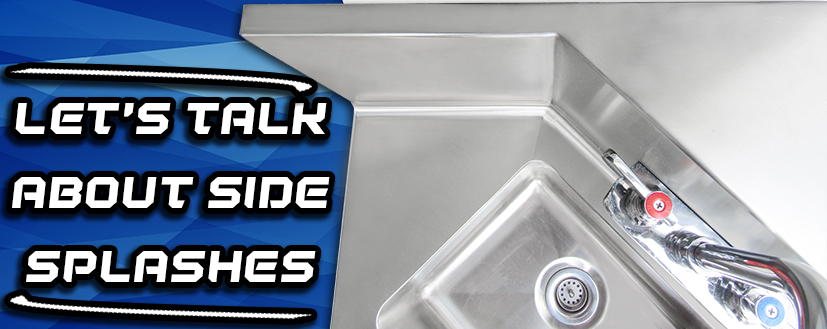A Guide to IMC Stainless Steel Edging

When we think of worktables, dishtables or hand sinks, the edges is not the first thing to come to mind. However, the edges are just as important as the main body of the product itself. In fact, the edge makes all the difference when it comes to cleanliness & hygiene of your facility. How so?
In this article, we’ll talk about the 3 edge types that IMC utilizes on worktables, dishtables & hand sinks – going over the uses & showing examples. Lastly, we’ll answer the burning question, “Is one edge better than the other?” Let’s begin.
Not All Edges are Equal
When it comes to edging, it’s important to recognize your application. Some edges are more useful in certain situations than others. We’ll share more on that later in the article. For now, let’s inspect each edge type:
A. Flat/Square Edge
Perhaps the simplest edge to understand would be the flat/square type. It is the most cost-effective choice when it comes to edging.
The flat edge gives the product a uniform & clean look, but offers little resistance to spills – which can end up on your floor instead. With that said, you can easily situate multiple products together in your work area thanks to the uniform siding.
Flat edging is considered to be the “standard” type when it comes to edges & will get the job done in most applications.
Flat/Square edging is standard on the following IMC products:
- All Worktables
- All Base Cabinets
- All Countertops
- Model #WS-CK Corner Hand Sink
Here’s a look at a few examples also:

B. Marine Edge
Marine edges, also known as “no-drip” edges, are designed to keep light-moderate amounts of water from spilling onto your floor.
Marine edges have a slight elevation that goes around the perimeter of the product. This is meant to keep liquids securely on the surface for cleanup later on.
Overall, the edge remains trendy & pairs well with commercial kitchen appliances. Chefs can benefit greatly from this edge design.
Marine edging is standard on the following IMC products:
- All Wall Mounted & Free Standing Hand Sinks (Except WS-CK Corner Hand Sink)
- Model #MSK Portable Soak Sink
Here’s a look at a few examples also:

C. Raised Rolled Edge
The tallest edge we manufacture is called the raised rolled edge. Compared to marine edges, the elevation of these is much more pronounced.
Raised rolled edges are designed to counteract virtually all liquids from landing on your floor. These are most commonly found in compartment sinks & dishtables where water is constantly being used.
Raised rolled edges remain soft so they are still useful for completing your tasks, but the raised composition of them can take some getting used to for your employees.
Raised rolled edging is standard on the following IMC products:
Here’s a look at a few examples also:

So, Which One is the Best?
Now that you are a pro in edge design, only one question remains – “Which is better for me?”
The truth of the matter is these 3 edge designs all have advantages, but it will come down to what your application is. If you are working in an environment where liquids are absent, you can get away with using flat/square edging. Flat/square edging is the least expensive option as well.
If you experience light-medium levels of spills & want something a little fancier, a marine edge should be suitable. If you have heavy amounts of liquids present, a raised rolled edge is a must. Try to pick the best configuration of edges to maintain safety & keep your productivity stable.
IMC/Teddy is able to modify most of the products above to have different edging if you desire. We remain flexible & want to give you an end product that will satisfy your requirements. To learn more about how IMC can cater to your stainless steel needs, click here.





In the illustrations above the Raised Roll Edge hasn’t any roll at all. Shouldn’t it be 3″ high and 1 5/8″ in diameter?
Hi Richard,
Thank you and IMC’s standard for a raised rolled edge is 1″ high & 1½” diameter. We can make adjustments upon request though.